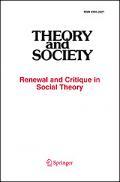
Abstract:
How did cultural dynamics help bring about the societies we now recognize as modern? This article constructs seven distinct models for how structures of signification and social meaning participated in the transitions to modernity in the West and, in some of the models, across the globe. Our models address: (1) the spread, via imitation, of modern institutions around the world (memetic replication); (2) the construal, by socio-cultural forces and by state organizations, of the modern citizen-subject (social subjectification); (3) the continual search for new meanings to replace traditional religious meaning-systems (compensatory reenchantment); (4) repeated attempts, in modern revolutions, to remake society completely, according to a utopian vision (ideological totalization); (5) the cultural origins and social consequences of scientific and humanistic worldviews (epistemic rift); (6) the gendered politics of state formation (patriarchal supercession); (7) the invention and production of race in the colonial encounter (racial recognition). We explicate the models in reverse chronological order, because in our synthesis, we argue that the original modern break results from a dynamic combination of racial recognition, patriarchal supercession, and epistemic rift; these changes set the stage for the four other processes we theorize. In addition to our synthesis, we also consider, from a more neutral perspective, the kinds of causal arguments upon which these models tend to rely, and thus explicate the analytical undergirding for the application of any of these models to empirical research on transitions to modernity. Throughout the article, we consider how these models might, and might not, mesh with other families of explanation, such as the politico-economic.